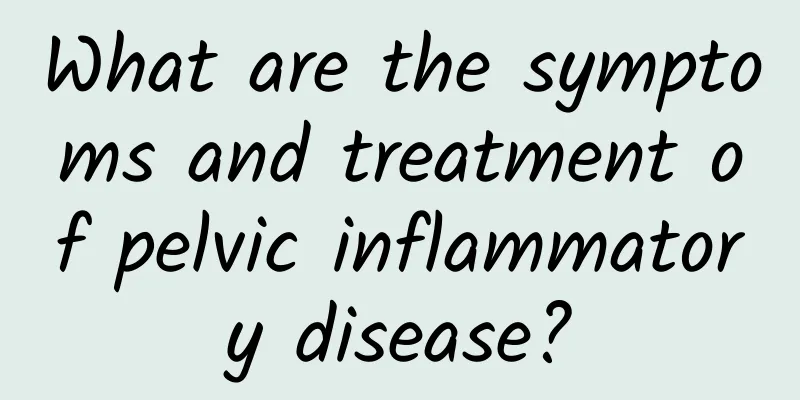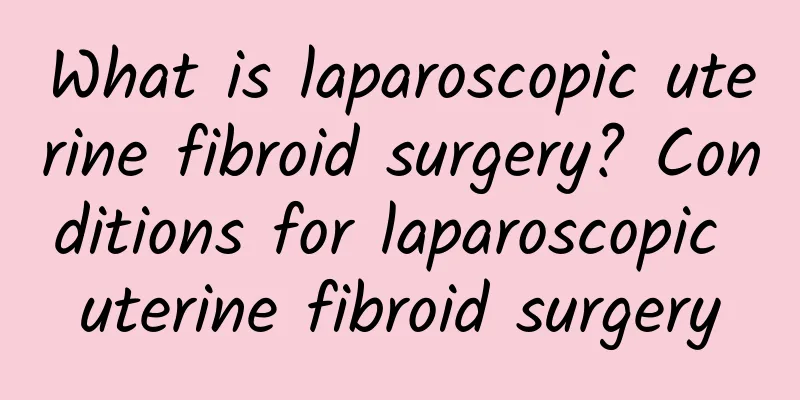What are the symptoms and treatment of pelvic inflammatory disease?

|
What are the symptoms and treatments of pelvic inflammatory disease? In fact, in real life, not all women will suffer from pelvic inflammatory disease, only a few will develop it, mainly because the female reproductive system has a natural defense function, but there are still many women who do not pay attention to daily hygiene and living habits, leading to the onset of pelvic inflammatory disease. So, what are the symptoms and treatments of pelvic inflammatory disease? Symptoms of pelvic inflammatory disease: Acute pelvic inflammatory disease: Its symptoms are lower abdominal pain, fever, increased vaginal discharge, and persistent abdominal pain that worsens after activity or sexual intercourse. If the condition is severe, there may be chills, high fever, headache, and loss of appetite. Those who develop the disease during menstruation may experience increased menstrual flow and prolonged menstruation. If pelvic inflammatory disease wraps around to form a pelvic abscess, it may cause local compression symptoms. Compression of the bladder may cause frequent urination, painful urination, and dysuria; compression of the rectum may cause rectal symptoms such as tenesmus. Further development of acute pelvic inflammatory disease may cause diffuse peritonitis, sepsis, and septic shock, and severe cases may be life-threatening. Chronic pelvic inflammation: It is caused by the failure to completely treat acute pelvic inflammation or the poor physical condition of the patient, and the prolonged course of the disease. The symptoms of chronic pelvic inflammation are lower abdominal distension, pain and lumbar pain, which are often aggravated after fatigue, sexual intercourse and before and after menstruation. The second is abnormal menstruation and irregular menstruation. After a long course of the disease, some women may experience neurasthenia symptoms such as lack of energy, general discomfort, and insomnia. It often does not heal for a long time and recurs repeatedly, leading to infertility and tubal pregnancy, which seriously affects women's health. Pelvic inflammatory disease treatment: 1. Drug treatment: Antibiotics are the main treatment for acute pelvic inflammatory disease, including intravenous infusion, intramuscular injection or oral administration. Broad-spectrum antibiotics should be used in combination with anti-anaerobic drugs, and attention should be paid to the sufficient course of treatment. It can also be combined with traditional Chinese medicine treatment to achieve better results. 2. Surgical treatment: Surgery is suitable for patients with lumps such as hydrosalpinx or tubo-ovarian cysts. Surgery is also suitable for patients with small infection foci and repeated inflammation. The principle of surgery is to completely cure the disease and avoid the chance of recurrence of residual lesions. Adnexectomy or salpingectomy should be performed. For young women, ovarian function should be preserved as much as possible. Single therapy for chronic pelvic inflammatory disease is less effective, so comprehensive treatment is appropriate. 3. Physical therapy: benign warm stimulation can promote local blood circulation in the pelvic cavity, improve the nutritional status of tissues, and increase metabolism, so as to facilitate the absorption and disappearance of inflammation. Commonly used methods include short wave, ultrashort wave, ion penetration (various drugs such as penicillin, streptomycin, etc. can be added), wax therapy, etc. Traditional Chinese medicine also has the method of Chinese medicine packing and treatment. In addition, it is also necessary to pay attention to the patient's psychological treatment. General treatment can relieve the patient's mental concerns, enhance the patient's confidence in treatment, increase nutrition, exercise, pay attention to the combination of work and rest, and improve the body's resistance. Pay attention to daily diet, avoid spicy and irritating foods, pay attention to daily hygiene, and it is best not to have sex during treatment. |
<<: Best treatment for chronic pelvic inflammatory disease
>>: Is cervical erosion contagious?
Recommend
What are the harms of pelvic peritonitis to the body
Diseases like pelvic peritonitis are not unfamili...
Let fat change your face! Lemonade weight loss craze is back
As the weather gets warmer, the lemon water weigh...
Lose weight without burden ~ Eat mindfully and lose weight
Weight loss and nutrition have always been topics...
Are polycystic ovarian cysts serious?
Ovaries are the source of life and youth for wome...
What are the symptoms of tumorous ovarian cysts?
Ovarian cysts are a type of tumor in a broad sens...
How to treat amenorrhea after miscarriage
What is amenorrhea? After miscarriage, amenorrhea...
Why do women have fat lower bodies? Evolutionary relationship!
(Text/Yang Qilin) Q: Why do women tend to be fat ...
Women should pay attention to daily prevention of pelvic inflammatory disease
Nowadays, more and more women are suffering from ...
Several common causes of acute cervicitis
Among cervicitis, acute cervicitis has an acute o...
How to check pathogens in chronic cervicitis
The pathogen detection of chronic cervicitis is m...
What does missed abortion mean?
What does a missed miscarriage mean? A missed mis...
Golden "Appleberry"! US research: Eat more to stay away from diabetes
"An apple a day, keeps doctors away." i...
What should women eat during menopause?
On the one hand, menopause harms women's phys...
How much does it cost to do uterine fibroid surgery? How to treat uterine fibroids?
Uterine fibroids are a common disease. Many frien...
Treatment principles for functional uterine bleeding
The treatment principles for functional uterine b...









